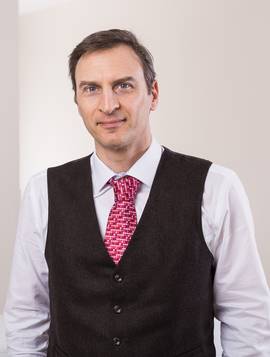Skin Surgery Information
Skin surgery is when a surgical procedure is carried out under local anaesthesia to remove skin cancer, cysts, moles or other skin growths. Dr Palamaras will usually use a specific sterile knife (scalpel) to remove the entire growth of the skin and then will apply stitches to close the gap. Different types of skin surgical procedures are used depending on the location, depth and type of skin growth that requires treatment.
What happens during skin surgery?
Before your skin surgery, Dr Palamaras will explain the operation procedure to you in clear terms and you will be asked to sign a consent form giving your permission for the procedure to be carried out.
Then Dr Palamaras or a member of his staff will ask you to lie down on the Operating Couch.
Dr Palamaras will clean your skin with a disinfectant solution and then will inject the local anaesthetic with a very fine needle which "freezes" (numbs) the skin. This is the only time that you will feel a "sting" and then mild burning from the anaesthetic itself. The local anaesthetic only numbs the skin around the minor operation site and does NOT put you to sleep.
You will still be able to feel pushing, pulling or mild pressure during the procedure but not pain.
Once the skin is completely numbed, the skin surgery will take place.
If at any point during the surgery you still feel any sharp pain, then Dr Palamaras will top up the local anaesthetic until you don’t feel any pain at all.
After removal of the skin growth, any skin bleeding is usually stopped by using an electrical cautery machine.
The wound site is usually closed both with dissolvable and non dissolvable stitches with Plastic Surgery techniques so that Dr Palamaras achieves the best cosmetic outcome.
Finally, a special dressing or a simple plaster if the surgery is small is placed over the wound site. It is important to tell Dr Palamaras whether you are allergic to any particular dressings or plasters prior to the procedure.
What happens after skin surgery?
Depending on the site of skin surgery the stitches need to stay into your skin from one to two weeks. Please ask Dr Palamaras before you undergo surgery, especially if you are planning to be away from your home address in the few weeks after your Minor Operation and for when the stitches need to be removed.
The stitches are usually removed by a member of Dr Palamaras’ team (surgery nurse). An appointment will be made for you at the day of your surgery. Dr Palamaras will see you after the surgery to review you scar and how it is healing.
Should you have any concerns prior or after the procedure, please do not hesitate to contact Dr Palamaras either by calling his secretary or by contacting the clinic you are going to or had your operation.
Dr Palamaras advises to avoid any long-lasting contact with water (e.g. taking a bath) or water sports (e.g swimming) whilst the stitches are in place. Also, you should avoid any lifting of heavy weights that might pull on the stitches.
You may shower but NOT bath and get water on your stitches (but not for long) 24 to 48 hours after your skin surgery, depending on the extension of the procedure. Dr Palamaras will advise you accordingly. The stitches site then needs to be clean and dry after washing, by carefully patting the site with a clean towel.
Once the results of your procedure are available, Dr Palamaras will write to you and your GP.
What kind of complications can happen during or after skin surgery?
There is a small risk for skin infection for every surgical procedure. Dr Palamaras will explain to you the early signs to recognise should your wound site becomes infected and what to do about it.
There is also a small risk for bruising or bleeding after the procedure. Usually, when there is bleeding, it is sufficient to apply pressure on the wound for 10 to 15 minutes. If the bleeding does not stop, then you should contact Dr Palamaras or your GP or go to a local A&E for review.
The wound site will be tender and sore for several days after your surgery. Dr Palamaras may ask you to rest the site where he performed surgery for several days after the procedure.
Occasionally, some numbness may persist for few months on the surrounding area of the scar, if the skin growth was very deep into the skin. On this occasion some sensory nerves may be cut during the procedure causing numbness. However, most of the times the sensation returns slowly back to normal whilst the sensory nerves regrow.
There will always be a SCAR which is PERMANENT on the area of the skin that has been cut for your Minor Operation. However, Dr Palamaras uses Plastic Surgery techniques so that you get minimal scarring.
Some people have a tendency to form “lumpy” scars called HYPERTROPHIC AND KELOID SCARS as their wound site heals. Keloid scars are more likely to form on certain parts of the body such as shoulders, upper chest and back and occur more commonly but not exclusively in black skin.
If you notice any abnormal healing of you wound, please contact Dr Palamaras as soon as possible for further advice, as this abnormal scarring can be stopped and more easily cured when treated on time.
